We often encounter many “mushrooms” that look like Ganoderma in our daily life.
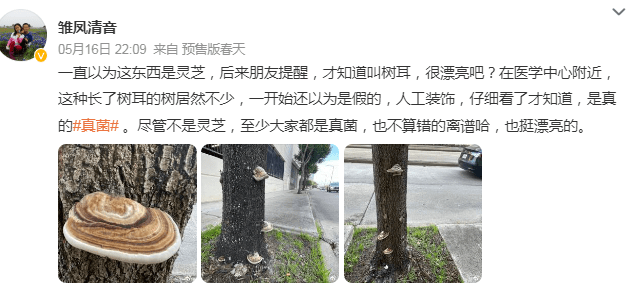
However, most of them are “in the same family and different genus” with Ganoderma lucidum, just like there is a huge difference between humans and chimpanzees.
The “Monkey Bench” that grows on tall trees and is often used by monkeys to climb and view far is considered a “millennium-old Ganoderma“. In fact, it is classified as “Fomitopsis pinicola” that can grow to a size larger than an adult’s arms spread out. However, it is not a Ganoderma and cannot be consumed due to its lignification.
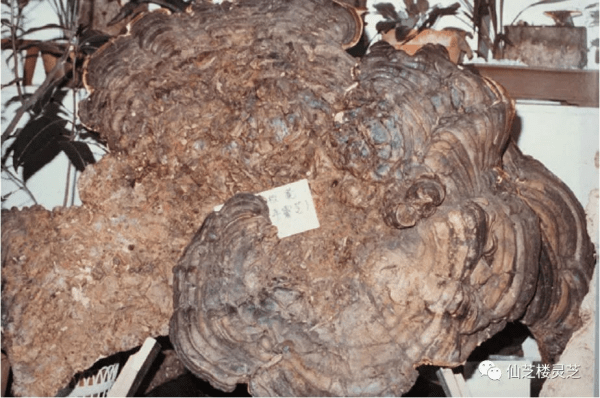
▲ Fomitopsis pinicola, often regarded as “Millennium Ganoderma” (provided by Ruey-Shyang Hseu)
There are huge differences between the two types of mushrooms in the same “family” and different “genus”.
First of all, we need to know that Ganoderma lucidum is a fungus, not a plant.
Fungi cannot photosynthesize and must thrive on decaying plant or animal remains.
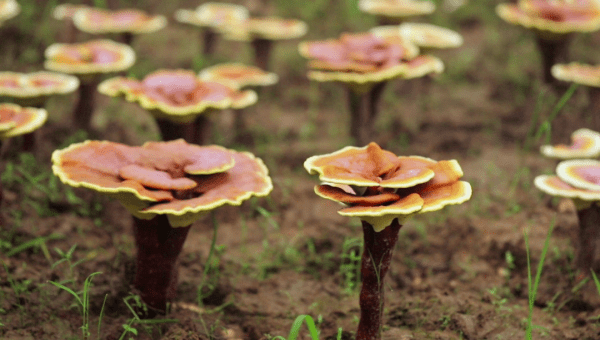
The position of “Ganoderma” in the modern biological classification system
Myceteae
(1) Most fungi have a “nucleus + cytoplasm + cell membrane + cell wall” structure.
(2) They do not carry out photosynthesis, but use decomposed animal and plant residues as nutrients.
(3) They often form mycelium.
(4) They reproduce by spores.
Amastigomycota
The spores have no flagella, do not swim, and grow wherever they land.
Basidiomycetes
It has a “basidium” structure. The basidium is the cradle for breeding spores, so the spores are also called basidiospores. The basidium of Ganoderma is located inthe “tube layer” of the cap, and one basidium will produce 4 spores.
Aphyllophorales
There are many gills at the bottom of the cap of shiitake mushrooms while the bottom of the cap of Ganoderma lucidum is flat.
Polyporaceae
There are fine hole-like structures at the bottom of the cap of Ganoderma lucidum, behind each hole is a tube, and the spores are released from these holes.
Ganoderma
The structure of the spores must meet the following conditions for fungi to become members of the “Ganoderma” family:
(1) It is asymmetrically oval.
(2) There are double cell walls.
(3) The outer cell wall is thin and transparent.
(4) The inner cell wall is thicker, brown in color, and has verrucous protrusions.
According to the appearance and internal structure of the fruiting body, different “species” of Ganoderma can be further distinguished. Only Ganoderma of the same species can mate with each other and grow another Ganoderma.
Each level represents some important biological features. The higher the level is, the less everyone has in common; the lower the level, the more subdivided the groups are, the more common points they have with each other, and the closer the relationship.
To be called Ganoderma, a mushroom must be a member of the genus “Ganoderma”.
The following types of mushrooms, which are often compared with Ganoderma lucidum, belong to “the same family but different genus” with Ganoderma lucidum. They are quite different from each other!
None of the following are Ganoderma!
Coriolus versicolor
Coriolus versicolor, this kind of fungus looks like a turkey’s tail. Its cap is semicircular to shell-shaped. It is a common large-scale fungus, mainly wild. It grows on various broad-leaved tree stumps, fallen logs and branches.
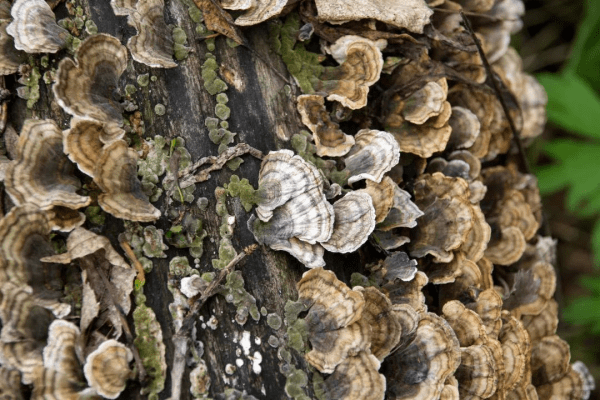
Although it does not belong to the Ganoderma family, and its efficacy is not as extensive as that of Ganoderma lucidum, the drug PSK (polysaccharopeptide Krestin), which is made of Coriolus versciclor polysaccharides, has been successfully used in clinical adjuvant therapy for tumor radiotherapy and chemotherapy, and can be said to be a pioneer in the medical use of mushroom polysaccharides.
Amauroderma
Amauroderma, with a round cap, a central depression resembling an umbilicus, and a drooping cap near the edge; Fresh Amauroderma has the color of a mouse, is gray in color, and turns black after drying. They are often used to mix and pretend to be “black Ganoderma” to deceive consumers.
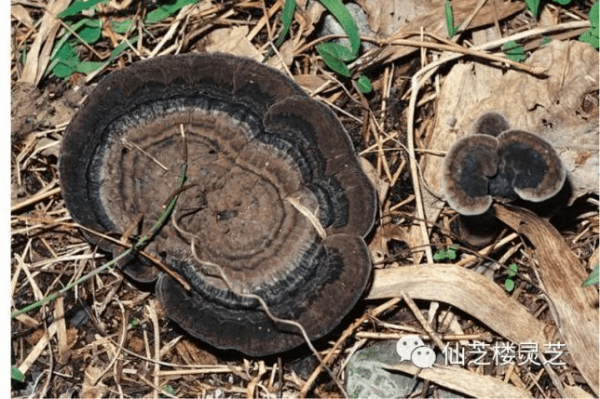
Fomitopsis officinalis
Also known as “Yuzhi”, Fomitopsis offcinalis, with white context, mainly grows on pine trees and other coniferous trees, in Xinjiang, Tibet and other places, and has become popular in recent years, but it is not Ganoderma, and there is little scientific research related to it.
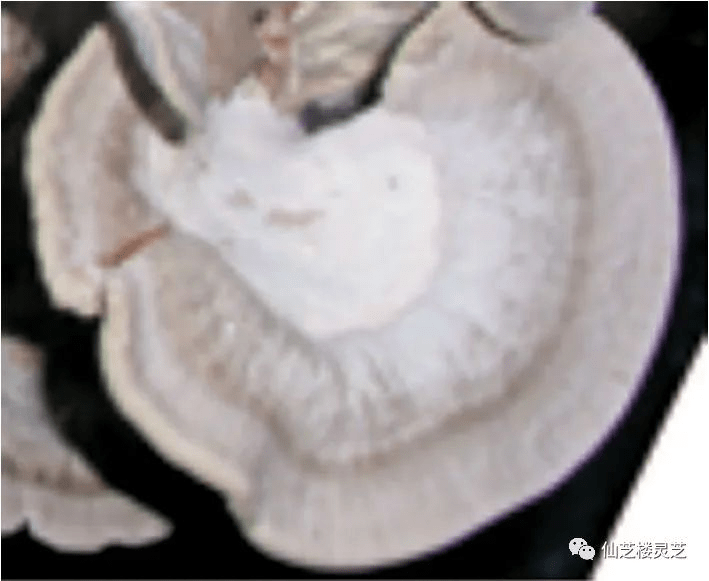
Antrodia camphorata
Among all the “non-Ganoderma“, the most famous is Antrodia camphorata. It got its Chinese name because it grows only on the endemic tree Cinnamomum kanehirae. It was officially published in scientific journals in 1995, and it was confirmed by genetic identification that it should be “Antrodia genus”, so it is not Ganoderma.
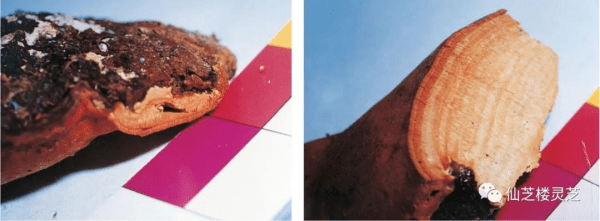
Many distributors of Antrodia camphorata claim that its triterpenoid content is much higher than that of Ganoderma lucidum, so the effect is better than that of Ganoderma lucidum, which is actually misleading.
“Terpene” is a general term. As long as there are “three terpenes” in the chemical structure, it can be called “triterpene”. Ganoderma lucidum triterpenes also have subsidiary structures, and different subsidiary structures have different effects. There are nearly 300 kinds of triterpenes in Ganoderma lucidum alone, and these triterpenes are unique to Ganoderma lucidum; while Antrodia camphorata does not have triterpenes from Ganoderma lucidum, even if its triterpene content is high, it is also triterpenes from Antrodia camphorata, not triterpenes from Ganoderma lucidum.
—Excerpted from p67 of Healing with Ganoderma written by Wu Tingyao
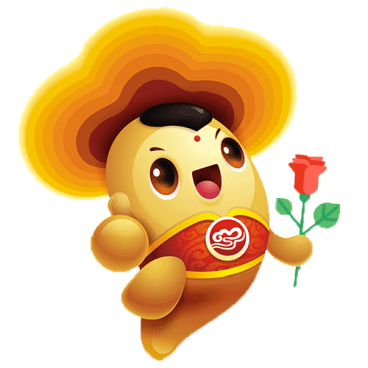
So what exactly is Ganoderma?
At present, only Ganoderma lucidum and Ganoderma sinense are included in the Chinese Pharmacopoeia. These two types of Ganoderma are also the Ganoderma that have been studied the most by scientists and are most widely used among the people.
The Chinese Pharmacopoeia records that Ganoderma lucidum or Ganoderma sinense have the effects of supplementing qi and quieting the spirit, suppressing cough and calming panting, and are often used for disquieted heart spirit, insomnia, palpitations, deficiency-taxation, shortness of breath, and no thought of food and drink.

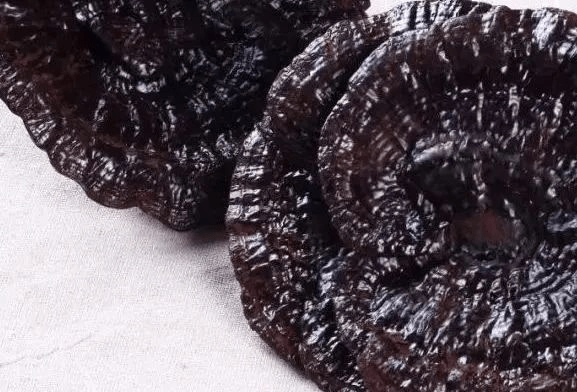
Next time you find mushrooms that look like Reishi, don’t dance with joy and treat them as treasures. Most of them are not real Reishi. For the real Reishi, you have to go to regular stores or pharmacies to buy them, so that you can eat them with confidence!
Information reference:
1. “Wonderful丨Fomitopsis pinicola and Antrodia camphorata are “not” Ganoderma“, GanoHerb Organic Ganoderma, 2019.03.22
2. “Wonderful丨Myth of Ganoderma lucidum polysaccharides and Ganoderma lucidum triterpenes”, GanoHerb Organic Ganoderma, 2019.04.19



